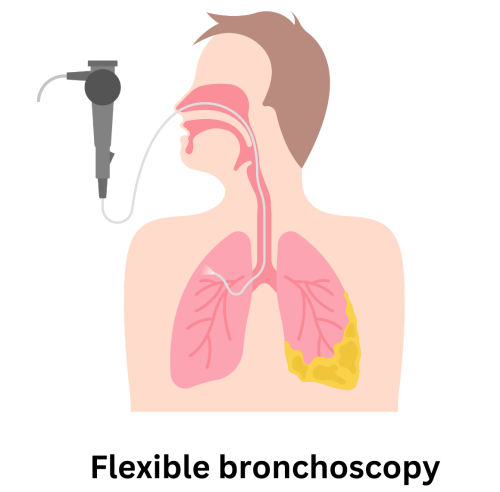Pediatric Flexible Bronchoscopy
Pediatric flexible bronchoscopy
Flexible bronchoscopy is a procedure that is used to examine a child’s airways and lungs. An instrument called a bronchoscope, which is a thin flexible tube with a camera at its tip, is used to directly visualize the respiratory tract.

Why is Flexible Bronchoscopy Used in Children?
- Evaluation of noisy breathing : Children may have airway blockages due to mucus, foreign body aspiration, congenital anomalies of the respiratory tract, or swelling of the airways. Flexible bronchoscopy allows identification and sometimes treatment of the blockage.
- Diagnosis of chronic respiratory symptoms : Children with persistent coughing, wheezing, or difficulty breathing who do not respond to the usual course of management may require bronchoscopy to identify the cause of symptoms.
- Sampling for testing : During the procedure, doctors can collect samples of mucus, tissue, or bronchial secretions for laboratory analysis. This is particularly useful for diagnosing infections and certain lung diseases.
The Procedure: What to Expect?
Before the procedure, the child will typically be given a mild sedative and/or local anesthesia to ensure comfort and reduce anxiety. Less commonly, general anesthesia may be required. During flexible bronchoscopy, a thin, flexible tube (the bronchoscope) is gently inserted through the nose or mouth and advanced into the airways. If necessary, instruments can be passed through the bronchoscope to perform additional procedures, such as removing a foreign body or taking tissue samples.
The actual bronchoscopy procedure usually takes a few minutes only and the entire process including pre-procedure preparation and post procedure monitoring may typically last for a couple of hours. It is usually performed as a day-care procedure and the child is discharged the same day after monitoring for a few hours.
Risks and Considerations
Flexible bronchoscopy is generally a safe procedure. Some children may develop a mild cough or throat irritation or occasionally fever. There are rare chances of complications developing due to the effect of anaesthesia. It’s important for parents and caregivers to discuss the procedure’s benefits and risks with the child’s doctor to make an informed decision. Most children recover quickly after the procedure and can resume normal activities within a few days.
